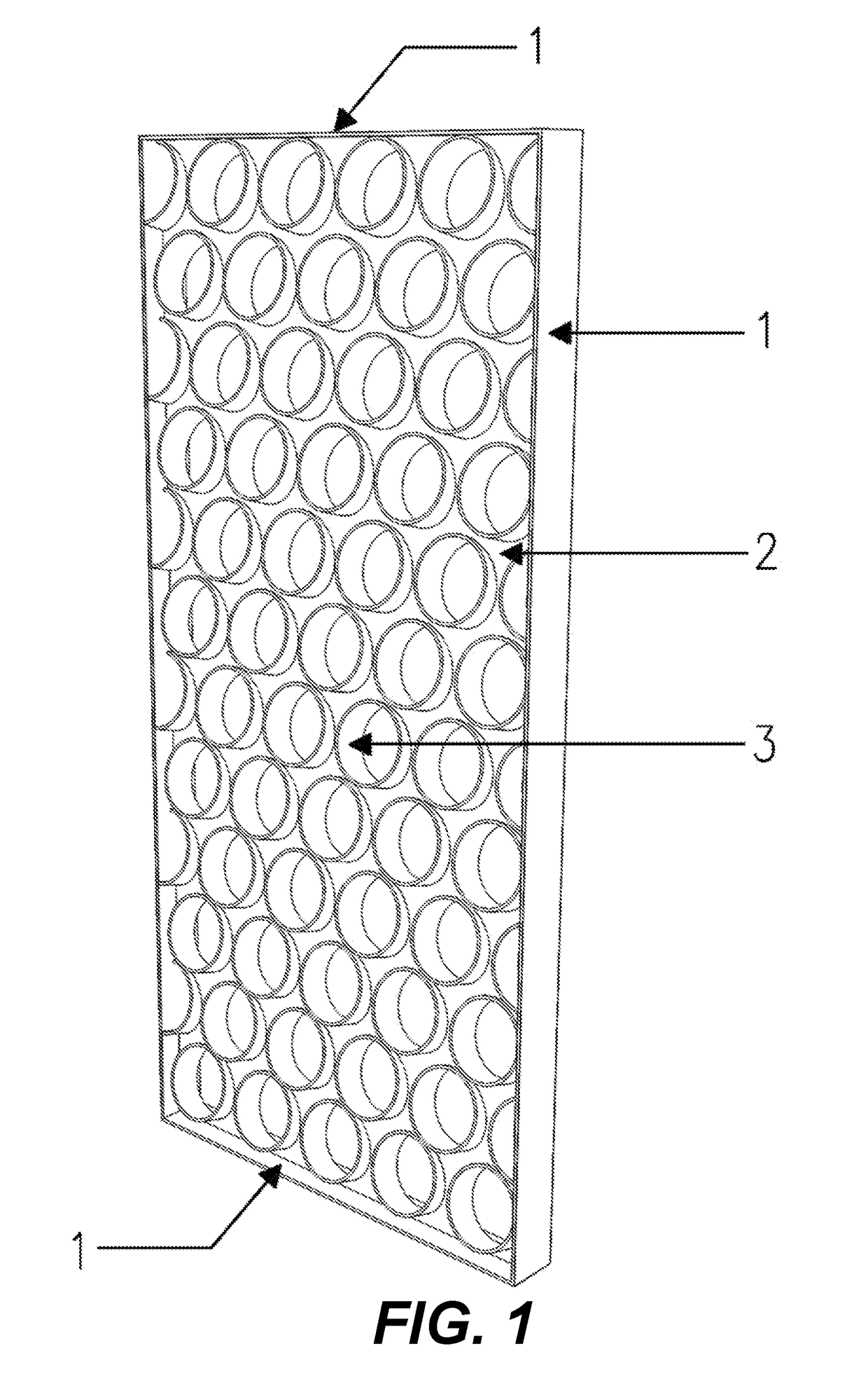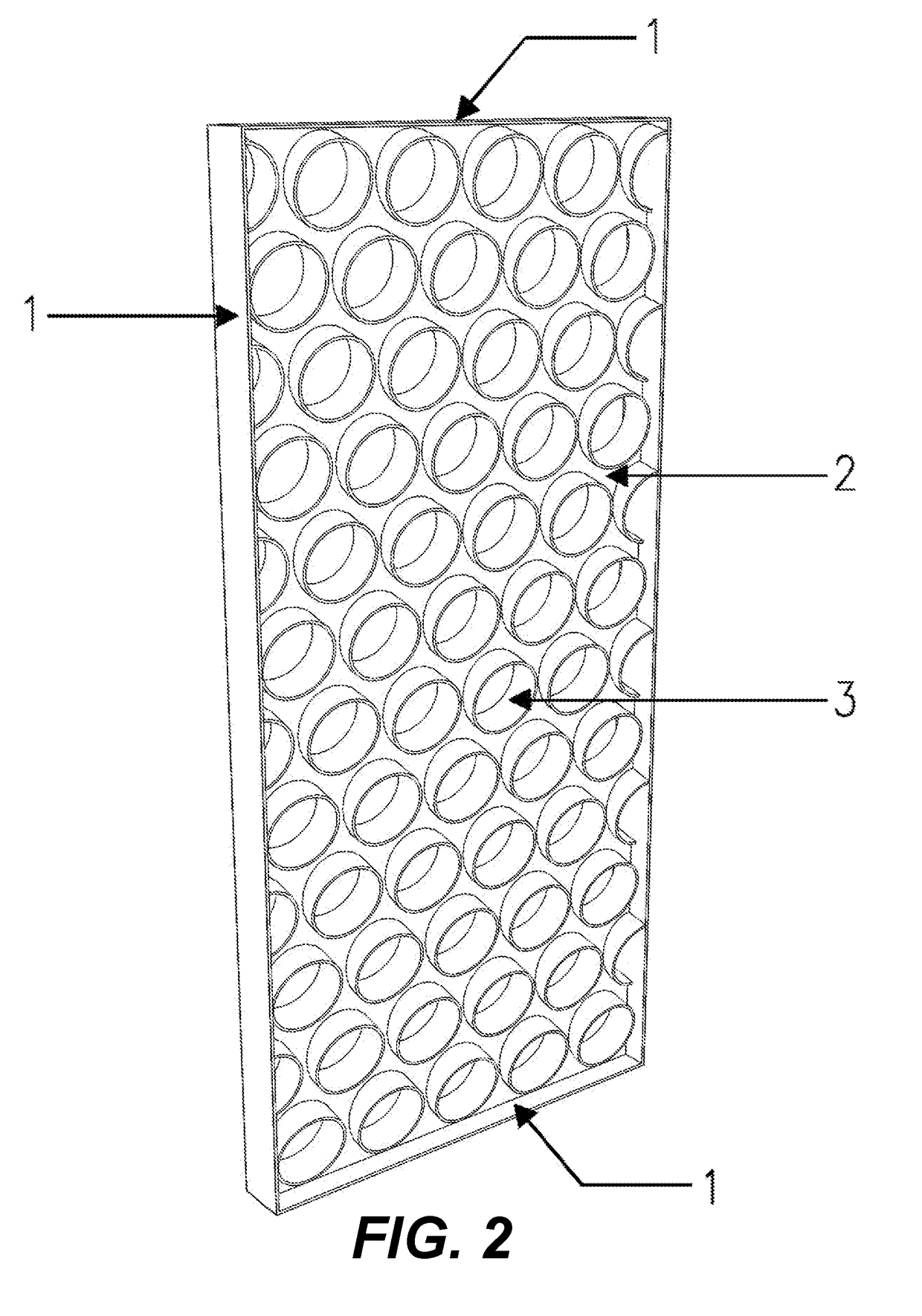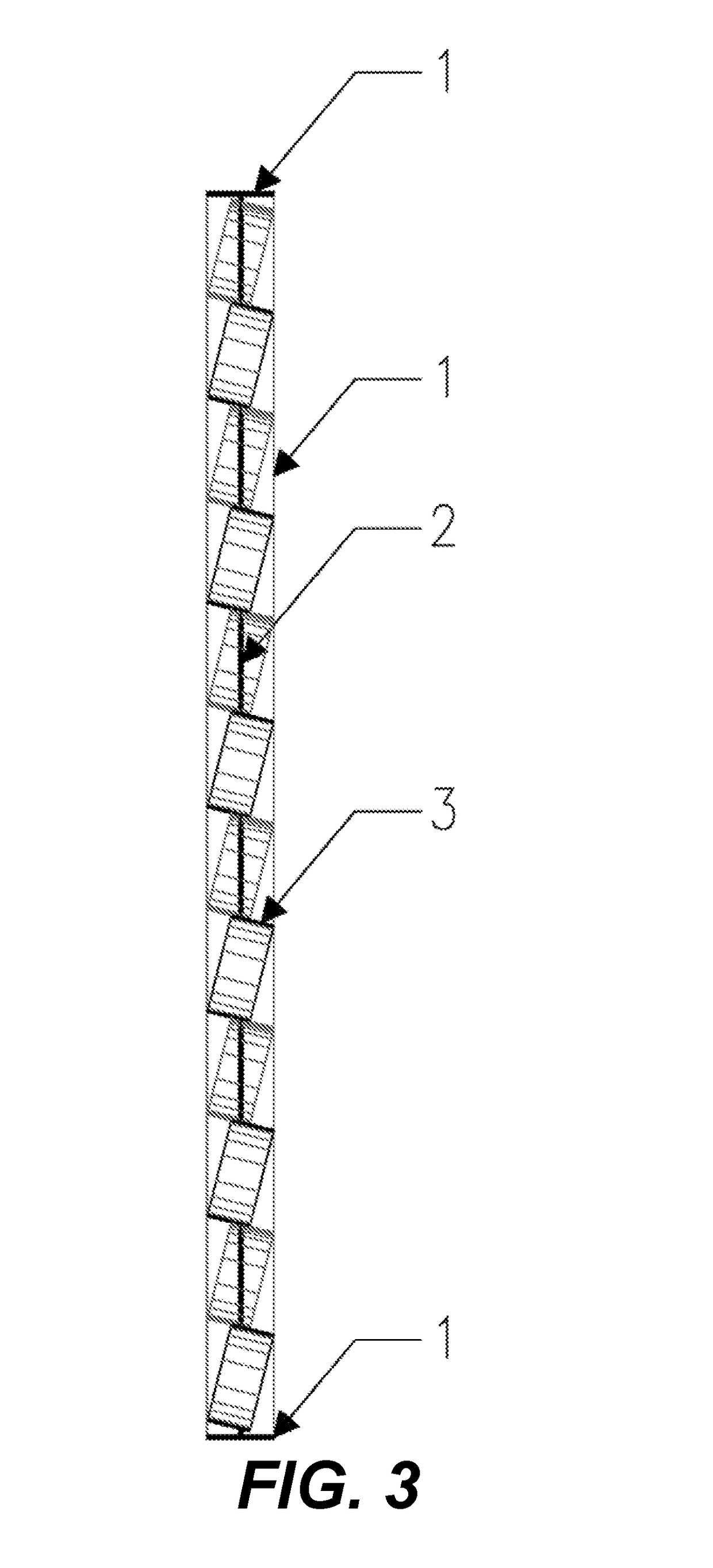Solar shading panel for north and south sides
a solar panel and north and south facing technology, applied in the field of solar shading panels for north and south sides, can solve the problems of accelerating the deterioration process of human skin, affecting the thermal comfort of human body, cooling load and power consumption of air conditioning systems, and uv radiation is known to be harmful to eyes and health, and achieves the effects of less material, convenient use and cleaning, and low cos
- Summary
- Abstract
- Description
- Claims
- Application Information
AI Technical Summary
Benefits of technology
Problems solved by technology
Method used
Image
Examples
Embodiment Construction
[0017]The present disclosure relates to a solar shading panel for use on north or south sides of a building. The design concept is to develop a shading cylinder unit and then assemble several units, by attaching the units to an opaque panel with spacing perforates and a frame, to provide a panel that can be used as a part of a wall, an opening, a door, a window, or could be implemented in other parts of the building. The cylinder units have a form designed to perform functions, which include a combination of receiving indirect light and protecting against direct light from the sun. A proportion of a diameter, a width, and a tilt angle of the cylinders are determined from calculations, which correspond to a position of the sun on a critical design day that varies with the latitude of the location. The front panel is used for the north side, while the rear of the panel is used for the south side. An installation of the solar shading panel can be fixed and prevent against direct sunlig...
PUM
 Login to View More
Login to View More Abstract
Description
Claims
Application Information
 Login to View More
Login to View More - R&D
- Intellectual Property
- Life Sciences
- Materials
- Tech Scout
- Unparalleled Data Quality
- Higher Quality Content
- 60% Fewer Hallucinations
Browse by: Latest US Patents, China's latest patents, Technical Efficacy Thesaurus, Application Domain, Technology Topic, Popular Technical Reports.
© 2025 PatSnap. All rights reserved.Legal|Privacy policy|Modern Slavery Act Transparency Statement|Sitemap|About US| Contact US: help@patsnap.com



